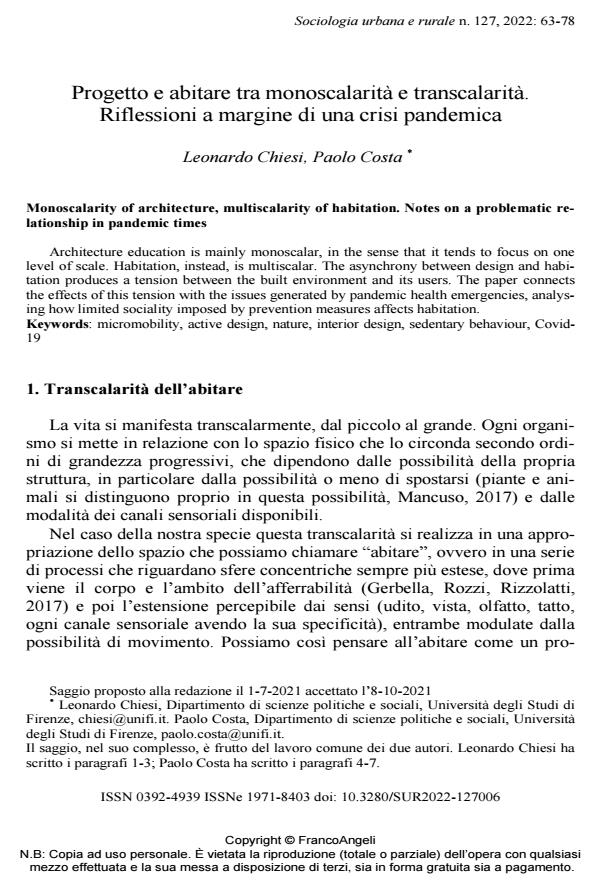Monoscalarity of architecture, multiscalarity of habitation. Notes on a problematic relationship in pandemic times
Journal title SOCIOLOGIA URBANA E RURALE
Author/s Leonardo Chiesi, Paolo Costa
Publishing Year 2022 Issue 2022/127
Language Italian Pages 16 P. 63-78 File size 286 KB
DOI 10.3280/SUR2022-127006
DOI is like a bar code for intellectual property: to have more infomation
click here
Below, you can see the article first page
If you want to buy this article in PDF format, you can do it, following the instructions to buy download credits

FrancoAngeli is member of Publishers International Linking Association, Inc (PILA), a not-for-profit association which run the CrossRef service enabling links to and from online scholarly content.
Architecture education is mainly monoscalar, in the sense that it tends to focus on one lev-el of scale. Habitation, instead, is multiscalar. The asynchrony between design and habitation produces a tension between the built environment and its users. The paper connects the effects of this tension with the issues generated by pandemic health emergencies, analysing how lim-ited sociality imposed by prevention measures affects habitation.
Keywords: micromobility, active design, nature, interior design, sedentary behaviour, Covid-19
- Re-naturalizing the built environment. Plants, architecture, and pedagogy in contemporary green schools Leonardo Chiesi, Paolo Costa, Fabio Ciaravella, Bianca Galmarini, in Frontiers in Sustainable Cities 1397159/2024
DOI: 10.3389/frsc.2024.1397159
Leonardo Chiesi, Paolo Costa, Progetto e abitare tra monoscalarità e transcalarità. Riflessioni a margine di una crisi pandemica in "SOCIOLOGIA URBANA E RURALE" 127/2022, pp 63-78, DOI: 10.3280/SUR2022-127006